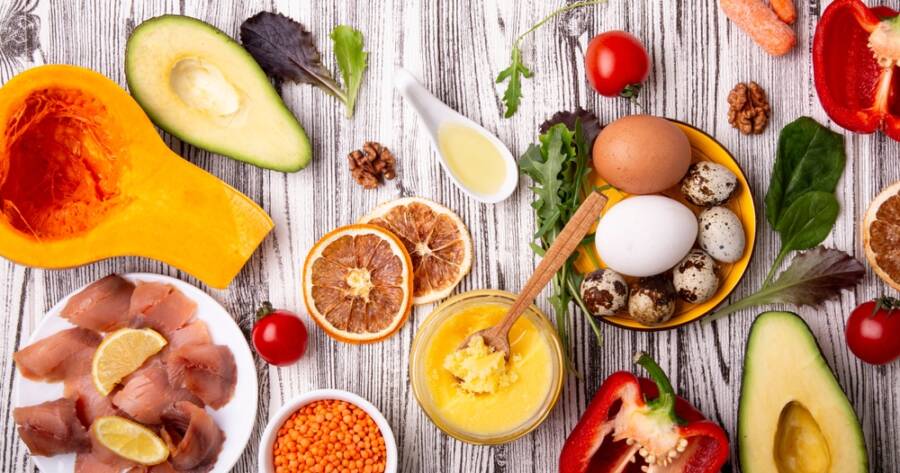Walk through any grocery store and you’ll see all kinds of labels—organic, natural, non-GMO, gluten-free, pasture-raised—all competing for your attention. And while some of these labels are regulated and meaningful, others can be vague or even misleading. If you’ve ever wondered what the difference really is between “organic,” “natural,” and “non-GMO,” you’re not alone.
Understanding what these labels mean (and what they don’t) can help you make smarter, more confident choices about the food you buy and eat. Here’s a clear breakdown of each term so you can navigate the aisles with ease.
What “Organic” Really Means
The “organic” label is one of the most strictly regulated food labels in the U.S. and Canada. When you see the USDA Organic seal or the Canada Organic logo, it means the product has met specific standards set by national certification programs.
Key standards for organic products include:
-
No synthetic pesticides or fertilizers
-
No genetically modified organisms (GMOs)
-
No antibiotics or synthetic hormones in livestock
-
Animals raised with access to the outdoors and more natural living conditions
-
No artificial preservatives, colors, or flavors
Organic farming practices also focus on environmental sustainability, crop rotation, and soil health. It’s important to note that “organic” doesn’t necessarily mean healthier—an organic cookie can still be high in sugar and calories—but it does reflect how the food was grown or produced.
Tip: For produce, you can also check the PLU code on stickers—organic items typically start with a 9 (e.g., 94011 for bananas).
What “Natural” Means (And Doesn’t)
“Natural” is one of the most misunderstood—and loosely defined—labels in the food world. Unlike “organic,” the term “natural” has no strict legal definition when it comes to most packaged foods in the U.S. or Canada.
In general, companies use “natural” to suggest that a product:
-
Doesn’t contain artificial colors, flavors, or preservatives
-
Is minimally processed
However, “natural” foods can still contain GMOs, added sugar, salt, and even certain synthetic ingredients. The term is not verified by third-party testing, and it doesn’t tell you anything about how the food was grown, whether it contains pesticides, or if animals were treated humanely.
Bottom line: Be skeptical of “natural” claims and read the ingredient list to get a better picture of what’s really inside.
What “Non-GMO” Means
“Non-GMO” refers to foods that are made without genetically modified organisms—plants or animals that have been altered at the genetic level in a lab to exhibit certain traits, like resistance to pests or longer shelf life.
You’ll often see the Non-GMO Project Verified label, which means the product has gone through third-party testing to ensure it meets strict non-GMO standards.
Important to know:
-
Non-GMO does not mean organic. A product can be non-GMO but still use conventional farming methods, synthetic pesticides, or chemical fertilizers.
-
Not all foods are at high risk of containing GMOs. Corn, soy, canola, cottonseed, sugar beets, and alfalfa are the most common GMO crops in North America.
-
Organic foods are always non-GMO, but non-GMO foods are not necessarily organic.
Tip: If avoiding GMOs is a priority for you, look for both the USDA Organic and Non-GMO Project Verified labels for extra assurance.
So, Which One Should You Choose?
It depends on your personal priorities. Here’s a quick cheat sheet to help you decide:
| Label | Regulated? | GMO-Free | No Synthetic Pesticides | No Artificial Ingredients | Animal Welfare Standards |
|---|---|---|---|---|---|
| Organic | ✅ Yes | ✅ Yes | ✅ Yes | ✅ Yes | ✅ Yes |
| Natural | ❌ No | ❌ Not Guaranteed | ❌ Not Guaranteed | ✅ Sometimes | ❌ Not Guaranteed |
| Non-GMO | ✅ Yes (if verified) | ✅ Yes | ❌ Not Guaranteed | ❌ Not Guaranteed | ❌ Not Guaranteed |
If your goal is to avoid pesticides, GMOs, and synthetic additives, organic is your best bet. If you’re simply trying to steer clear of GMOs, non-GMO verified products can be a good option. And if you see something labeled “natural,” be sure to take a closer look at the full ingredient list and nutrition label.
Making Choices That Work for You
Food labels can be confusing, but understanding what they mean puts the power back in your hands. Whether you’re shopping on a budget, prioritizing health, or trying to reduce your environmental footprint, knowing the difference between organic, natural, and non-GMO can help you make informed, intentional choices.
You don’t need to follow every label perfectly. Just focus on what matters most to you—and don’t be afraid to ask questions or dig a little deeper. The more informed you are, the easier it becomes to build a diet that feels good for your body and your values.

